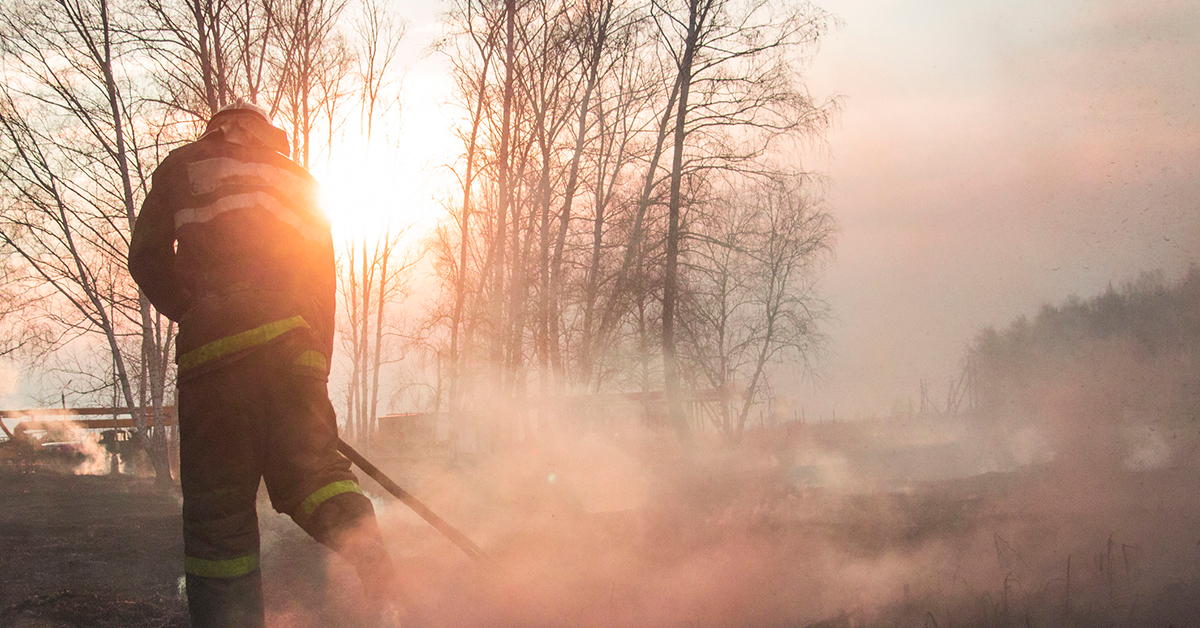
California Bans Insurers From Dropping Homeowners with Wildfire Damage
This past fall in California the Diablo winds blew in from the North, meeting with the Santa Ana winds from the South. Together, they stoked existing fires – fanning the flames across forests, hillsides and brush that was already left dry from California’s summer heat. The result was a total of 6,872 fire incidents in California this past 2019. The fires burned more than 253,321 acres with 732 structures damaged or destroyed and three fatalities. Homeowners were left overwhelmed by the enormous job of rebuilding their lives after the devastation.
Unfortunately, 2019’s numbers aren’t unique. Fire season in California has been consistently devastating and expensive. Some insurance companies began to scale back benefits, leaving many homeowners uninsured and even stopping those in the midst of rebuilding.
So, what are local officials, insurers, and advocacy groups doing to protect the rights and benefits of homeowners in California? Below are the actions being taken, as well as what can you do as a California homeowner to save the housing market.
In February, California’s Insurance Commissioner Ricardo Lara, lawmakers, and United Policyholders, a non-profit that advocates for insurance holders, introduced a bill dubbed “Renew California Bill” which if passed, does three things:
- Requires the creation of new statewide standards for protection against wildfires for homeowners and communities.
- Requires insurers to offer coverage to homeowners and communities that meet those standards.
- Requires insurers to offer financial incentives to homeowners and communities to meet those standards.
In December of 2019, the Department of Insurance expanded its ban on home insurers dropping policies in areas hit by and prone to wildfires. This expansion added protection to 200,000 more homes in areas including San Bernardino County and Northern California.
These moves are an attempt to curtail insurers from dropping policies in areas they identify as potential liabilities. According to a story in the LA Times, from 2015-2018 insurers were dropping coverage and refusing new clients by the thousands in wildfire prone areas. Those at risk communities “turned to the cheaper, less-comprehensive coverage offered by the California Fair Access to Insurance Requirements, also known as the FAIR plan.”
In an effort to meet new requirements and provide realistic coverage to homeowners, California insurers are attempting to strike a balance “that ensures the availability of coverage and safeguards insurers’ ability to pay homeowners’ claims in the face of large-scale disasters,” as noted in a joint statement released by The American Property Casualty Insurance Association and the Personal Insurance Federation of California. One way insurers are doing that is by fine tuning the ways they assess risk in these areas.
The article, Playing the Odds On the Next California Wildfire, shows that many models used by California insurers to assess the risk of certain areas often reveal a large gap between damage estimations and reality. Because insurers are making coverage decisions based on these frequently inaccurate models, they are often overzealous with coverage drops and rate raises.
When discussing these old models Attila Toth, the founder of Zesty.ai, a start-up that uses artificial intelligence to develop disaster risk assessment tools, stated “Many [insurance companies] are amputating limbs when they have a nail infection. Our model is looking at it surgically.” New companies are using AI, detailed satellite images, and a century’s worth of data to make more accurate risk predictions.
Homeowners stand to benefit from these advancements as well. Satellite images can let insurers confirm you’ve taken steps to harden your home and can give you warnings (say your neighbors bushes are hanging over your property) and give you time to make corrections before adjusting your rate.
As a Californian, you’re likely familiar with the term “hardening your home.” Simply put, it’s about making your home and property as fire resistant as possible. Here are some actionable wildfire relevant tasks for California homeowners.
- Check to see if you live in State Responsibility Area (SRA). If you do, you are legally required to comply with California preventative building and fire codes. This is true for homeowners and anyone looking to build new construction within SRA.
- Contact your insurance agent for specific home hardening requirements.
- When updating your home make sure you are making choices that are in line with your insurance policy and state law.
- Know which areas of your home are most vulnerable to fire and address those areas first: roofs, vents, eaves and soffits, windows and walls.
New homes are being built and rebuilt in areas that have been ravaged by fire. This is a testament to the tenacity of California homeowners. Policymakers and insurance companies are making commendable steps to protect homeowners and accurately assess the risk in each area, but climate change makes predicting future patterns tricky. Statewide insurance regulations and building codes combined with homeowner-initiated safeguards are the first steps to keeping the California dream alive.
Time to Focus on Affordable Housing
Taxes on real estate are not the answer. Sign the petition calling on Congress to address our country’s housing shortage.





